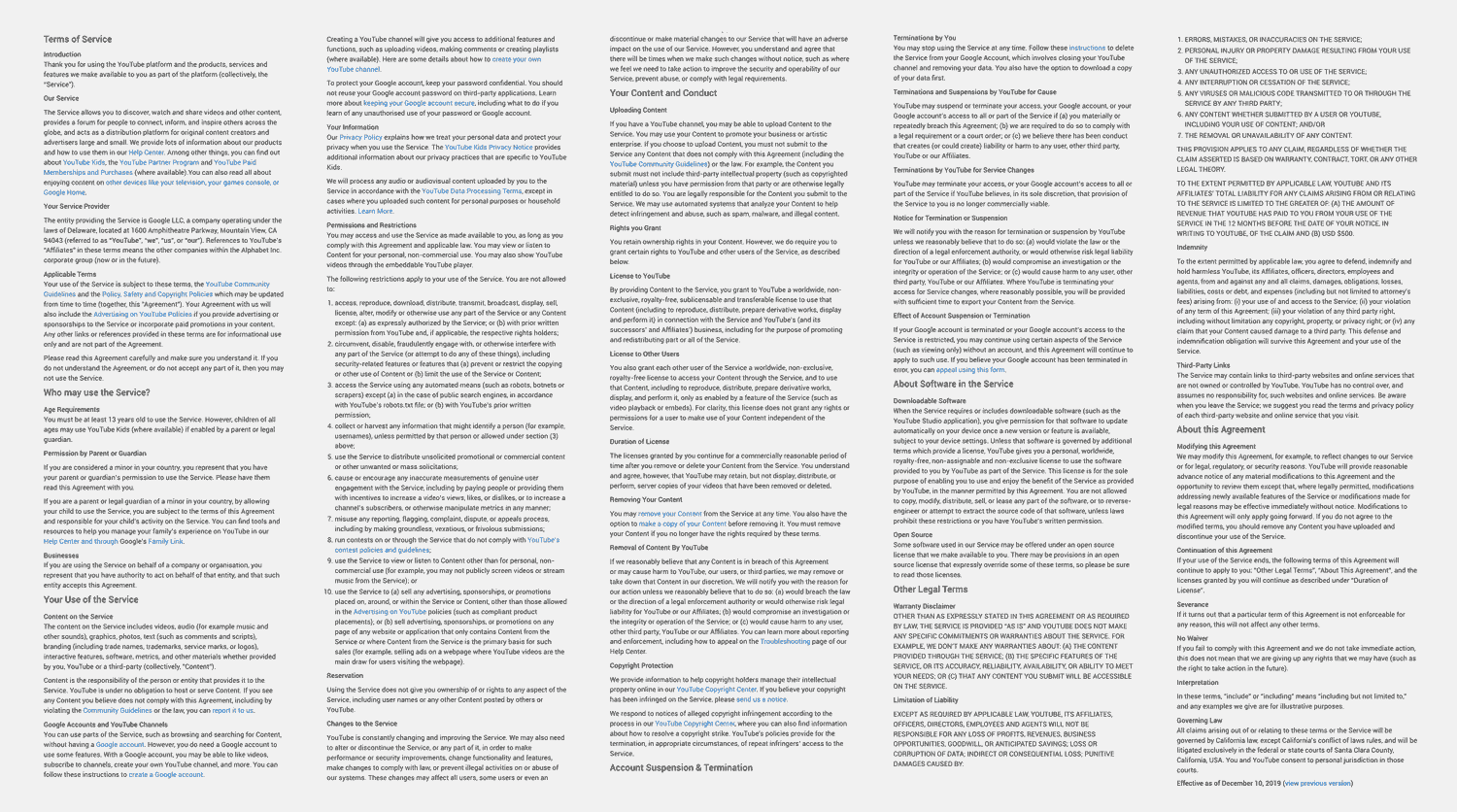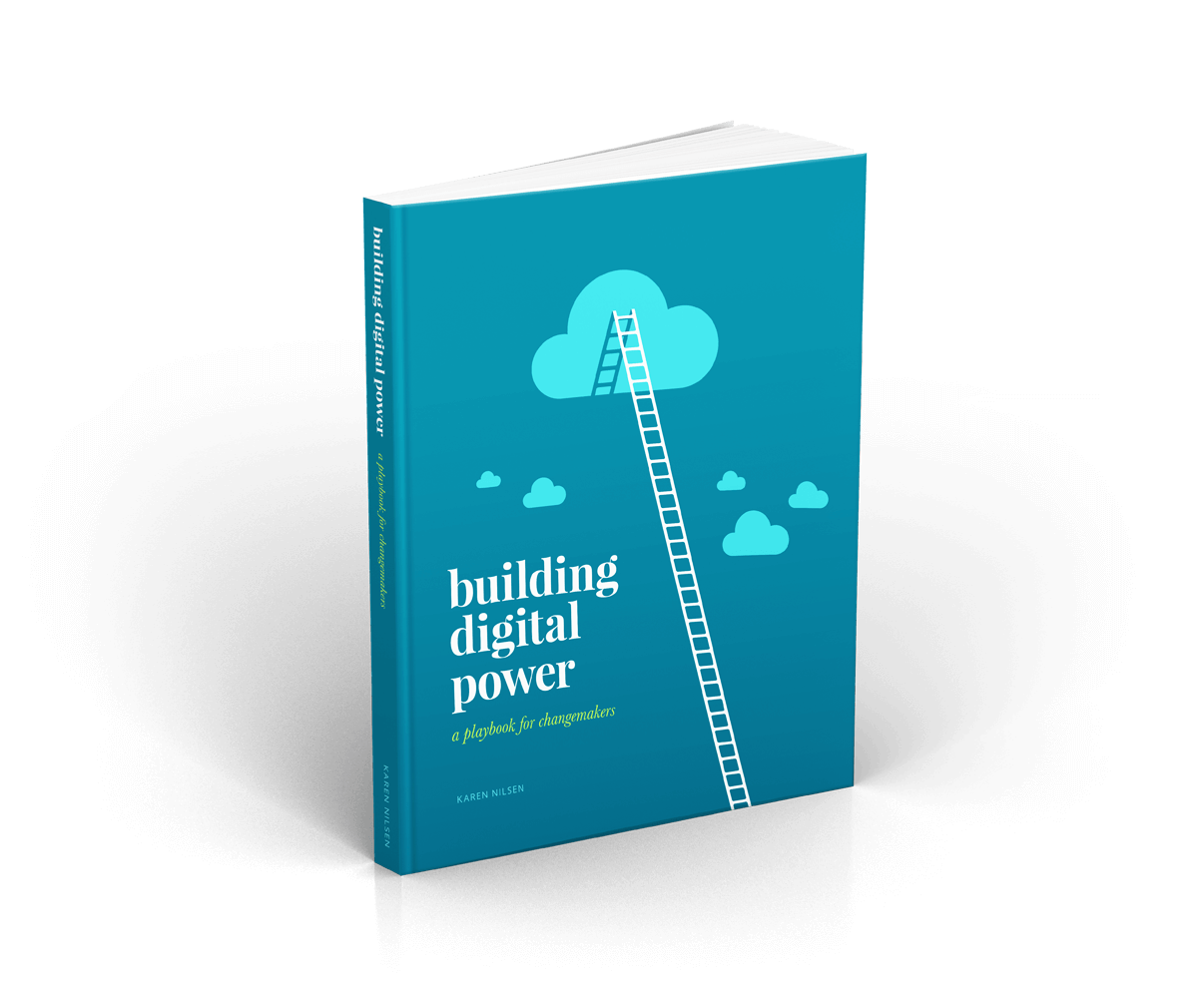Formatting for Skim Readers: Essential Tips
Here’s an important piece of digital communication that you’ve probably never read:

Few of us pay attention to stuff like this. And not because it doesn’t contain important information. It does. You’ve probably never read it because it was designed not to be read. This masterpiece is the Youtube Terms of Service. Points if you thought it was the Facebook privacy policy. Or the IOS user agreement.
Readers have a sixth sense for knowing when something is likely to be an unenjoyable read. A ‘wall of text’ is the first sign. It’s easy to forget this when we’re the ones writing the content.
How people really consume online content
Eye-tracking studies reveal that very few people read emails or web pages from start to finish. More often, our reader’s attention darts all over the place in an effort to absorb information as quickly as possible. In a few short seconds, your reader will decide whether to invest time in your content or give up. The strength of your visual cues will determine how often that decision falls in your favor.
It won’t matter how amazing your content is if your formatting doesn’t convince people to read it
Still reading? Pat yourself on the back—you’re one of the few! The hard truth is that a big chunk of your audience won’t read your beautifully-written content. At best they’ll skim it. Don’t give up on these readers just yet! With strategic formatting you can still reach them and convert them.
Lead with a strong headline
This is the one thing that everyone will read. Put time into it. Learn to write page headlines that work. Here’s where to start:
- Make your headline click-worthy (not click-baity)
- Give your headline ‘consequence’
- Identify your headline’s ‘value proposition’
- Why picturing your headline ‘off page’ is key to its success
Use a powerful hero image
A single compelling visual will reinforce your headline and make your subject matter feel concrete—both on your page and as a link preview on social media. Quality and composition matters. Follow these tips to choose an effective hero image.
Subheadings should hold their own
Subheadings are great at breaking up walls of text. But they can achieve so much more. Anything that visually leaps off your page should build meaning. What message are you sending skim readers who might only read your heading elements? Do you see impact, intrigue, or a compelling message?
Just like a headline, if a subheading is vague or lacks meaning without context, it’s not pulling its weight. If it merely rephrases another headline element, it’s redundant. Strengthen subheadings by turning them into concise, active statements that each bring something new to your page.
Strengthen subheadings by turning them into concise, active statements that each bring something new to your page
Be bold
Help your skim reader pick up on key information within paragraph text by bolding keywords selectively. But beware that’s it’s easy to go too far. Learn how to strike the right balance.
Unlock more digital strategy secrets.
Free eBookOther visual cues
The cliché is true: a picture is worth a thousand words. If you can save words by saying something visually, do. Photos communicate information fast which makes them valuable to skim readers. They also give text ‘breathing space’ which is vital for carrying readers through long-form content. Size and quality matters, so invest in decent images or stock photography. Just remember to add captions and alt text for SEO and accessibility.
If you want to include a confronting or graphic image on your page, consider using ‘click to reveal’ treatment. Your visitors will appreciate being given the ability to control their exposure to upsetting content.
Well-placed videos can enrich your reader’s experience. But they won’t play directly through emails. And even on web pages, there are some traps you’ll want to avoid.
Most things that aren’t paragraph text will draw the eye of skim readers. Bulleted lists, pull quotes, diagrams, infographics, action buttons, and other custom-designed elements (such as image galleries, sliders, form elements, etc.) can all break up content, build meaning, retain interest, and supplement any missing parts of your visual narrative.
Find balance
For the same reasons you should resist throwing every argument at your reader, you’ll want to use attention-seeking visuals sparingly, too. Too many will start to ‘fight’ each other. Aim for clarity. Short content might need very few formatting elements to perform well. Longer content will need more.
Make it look good on mobile
Whether it’s an email or a web page, chances are more people are looking at it on a phone. Make sure it’s responsive. And if you’re creating an email layout, consider how it will appear in the increasingly popular dark mode.
Put your formatting to the test
How our readers consume digital content is very different to how most of us write it. That’s fine. If you don’t intuitively ‘think visually’, just remember to go back and add subheadings and other visual cues to break up your text and guide skim readers.
Then consider this simple scanability test: do your headlines, first lines, subheadings, bold keywords, visual cues, and CTA buttons alone convey purpose, uniqueness, and urgency?
We can’t control whether a reader stays for 10 seconds or 10 minutes. But the neat thing about strategic formatting is that it doesn’t matter—you have full control over which parts of your message readers will pay attention to.
Was this tip useful?


Get a free weekly digital strategy tip:
Unsubscribe any time. We respect your data. View the privacy policy.
Like this tip? Share it!






